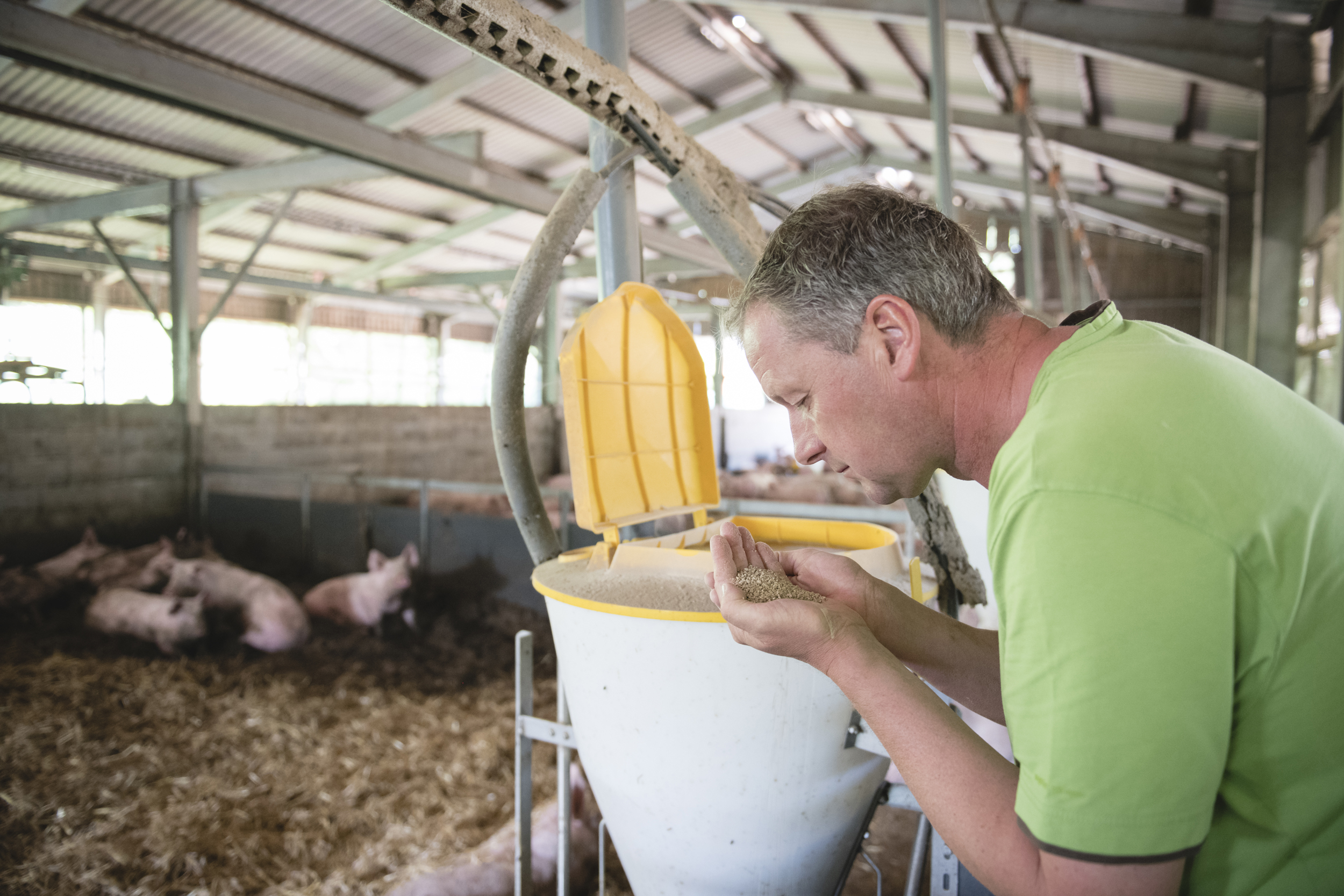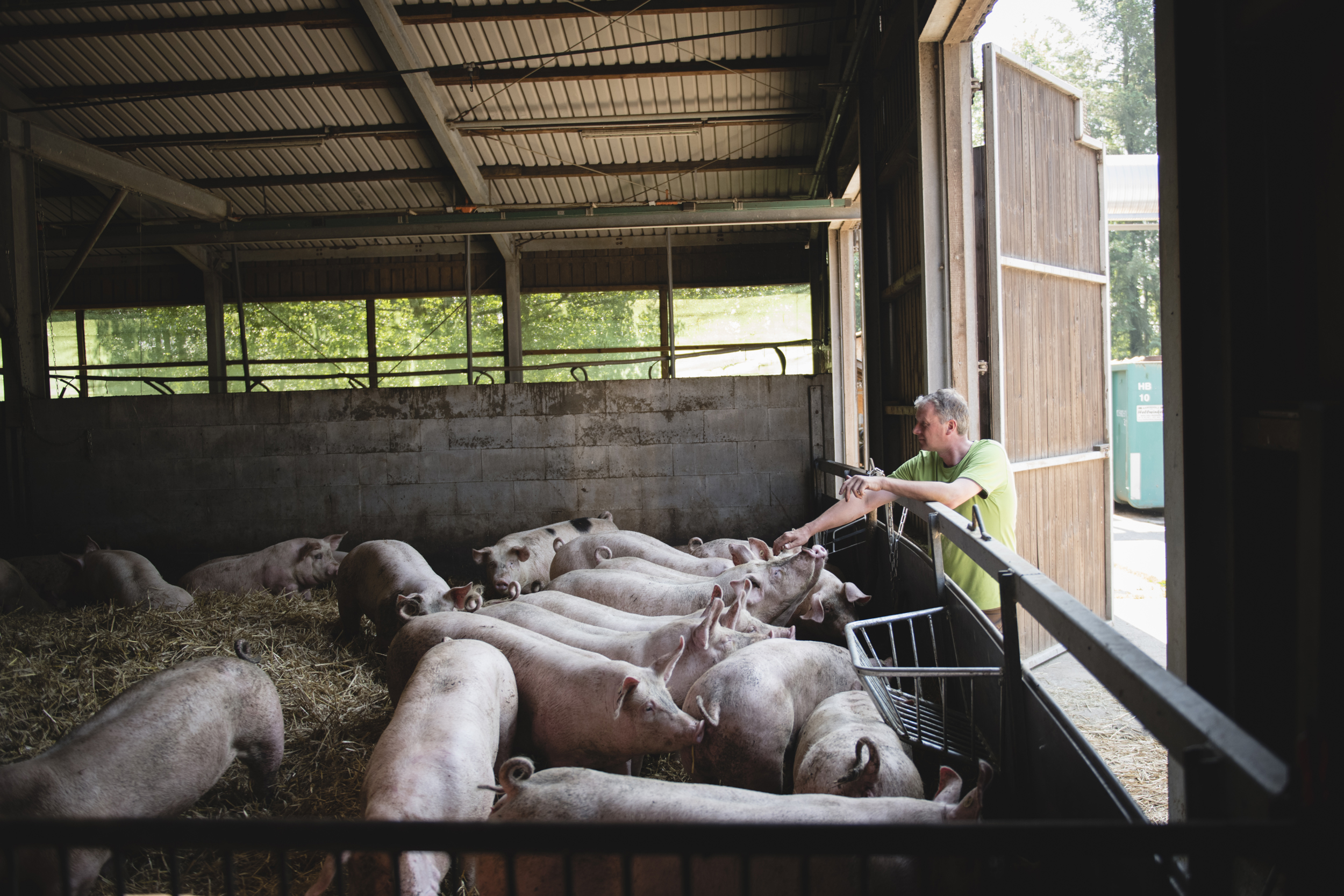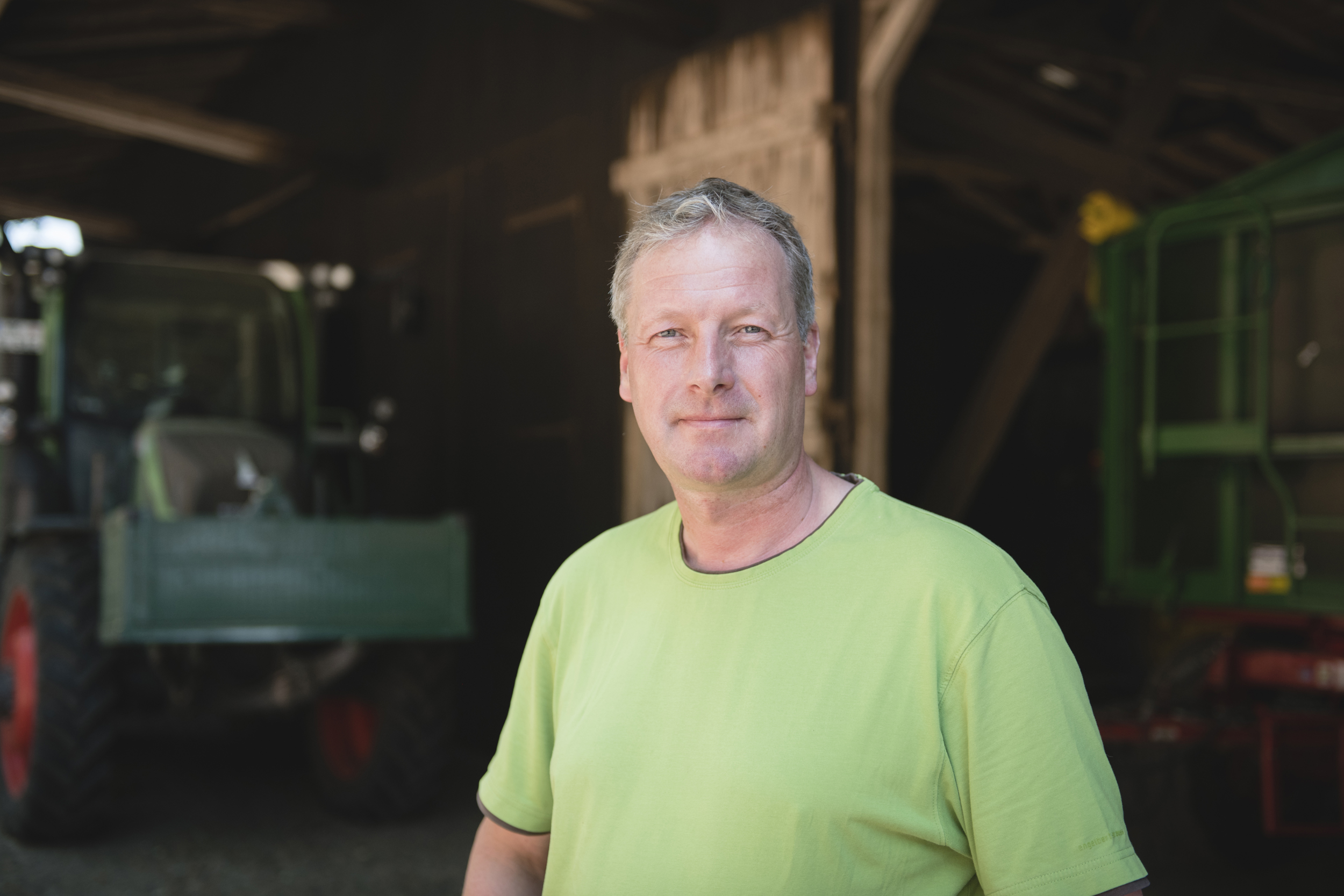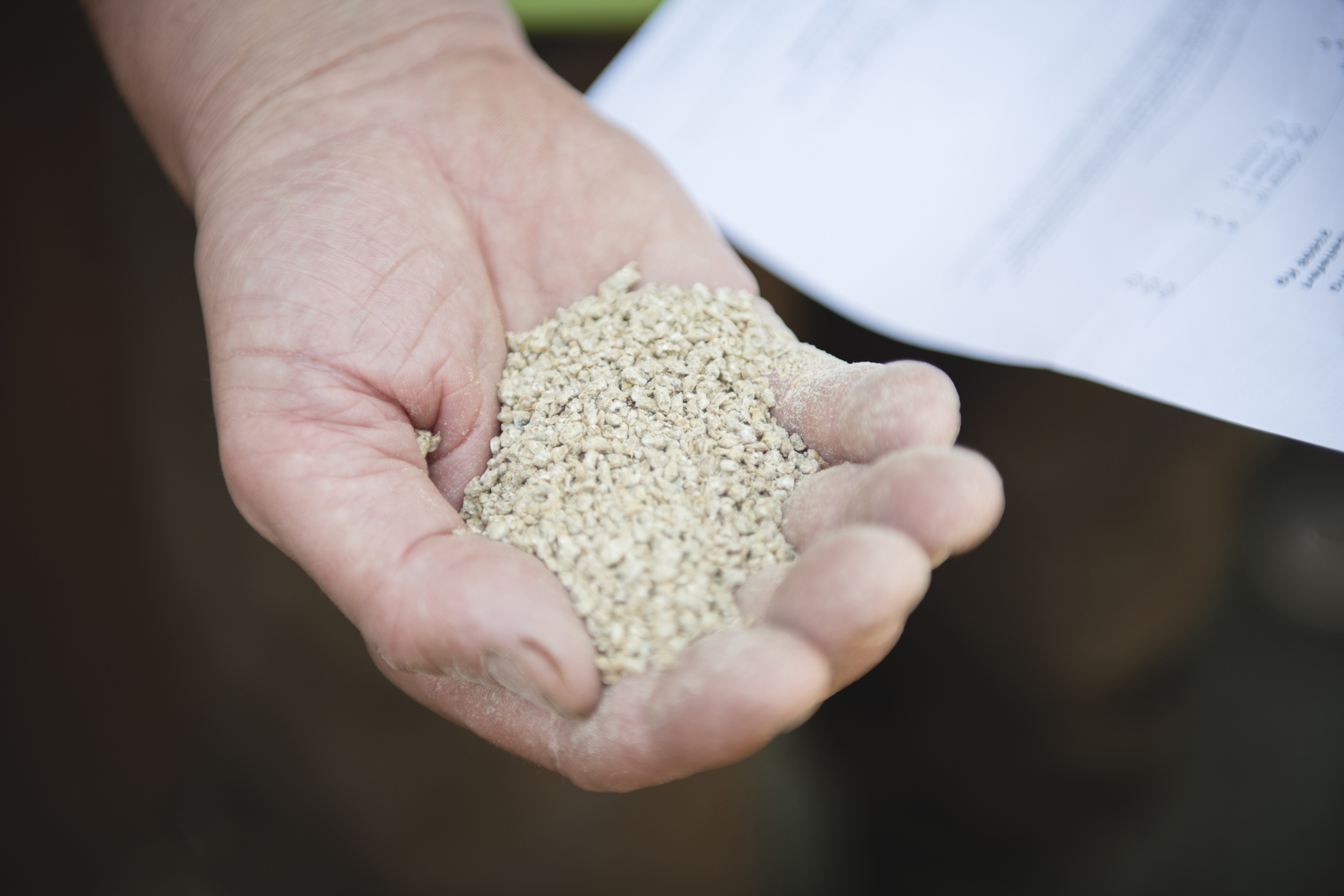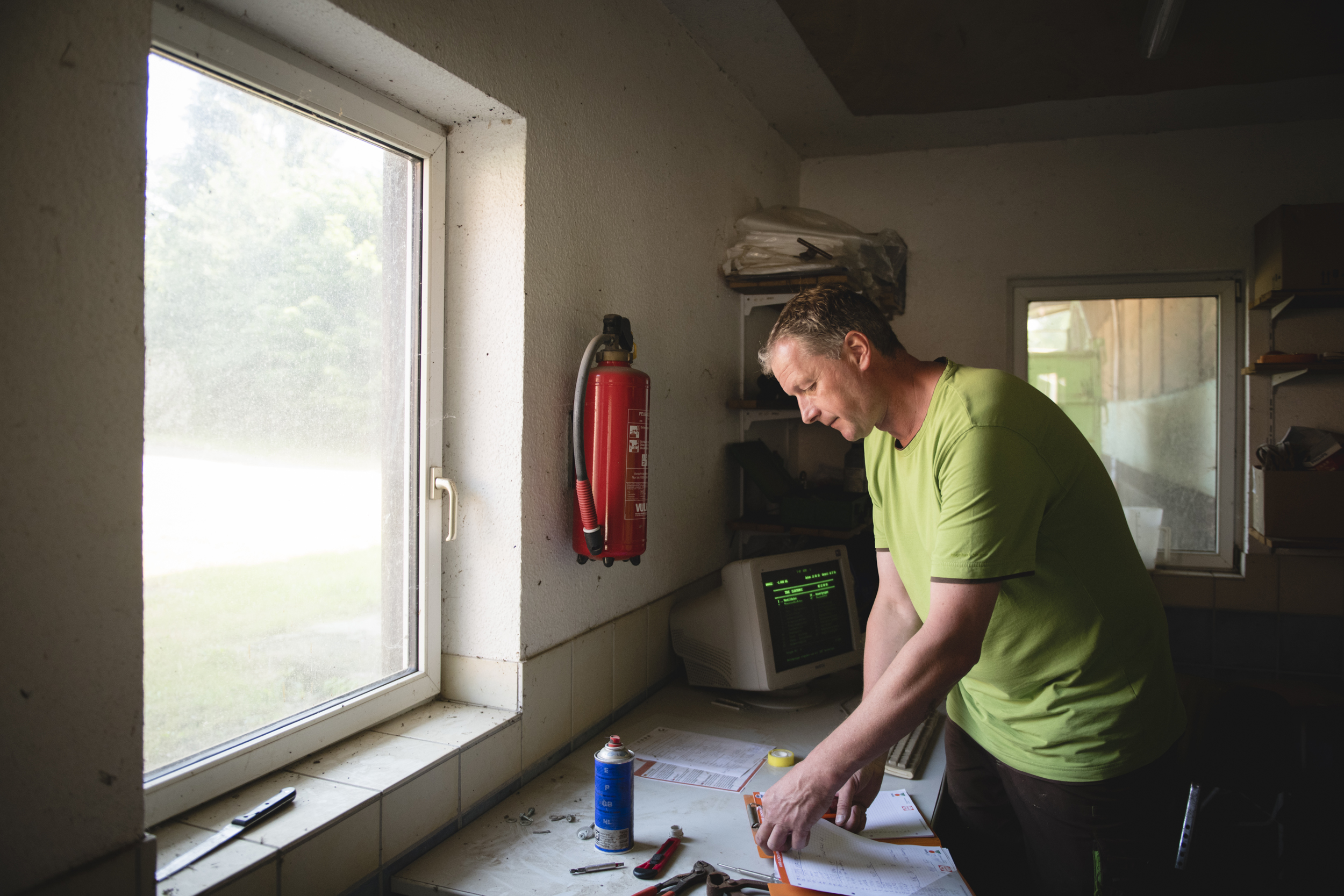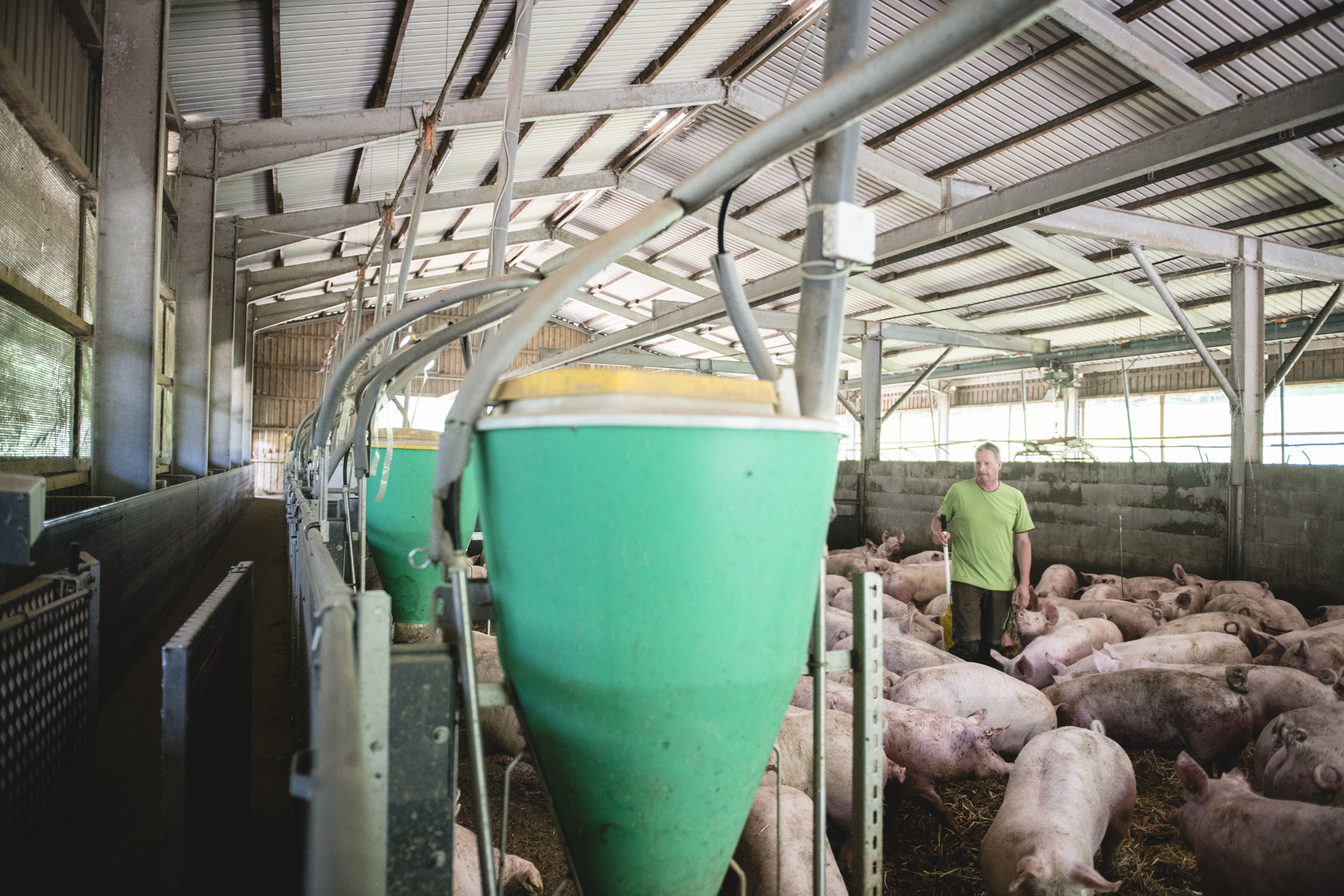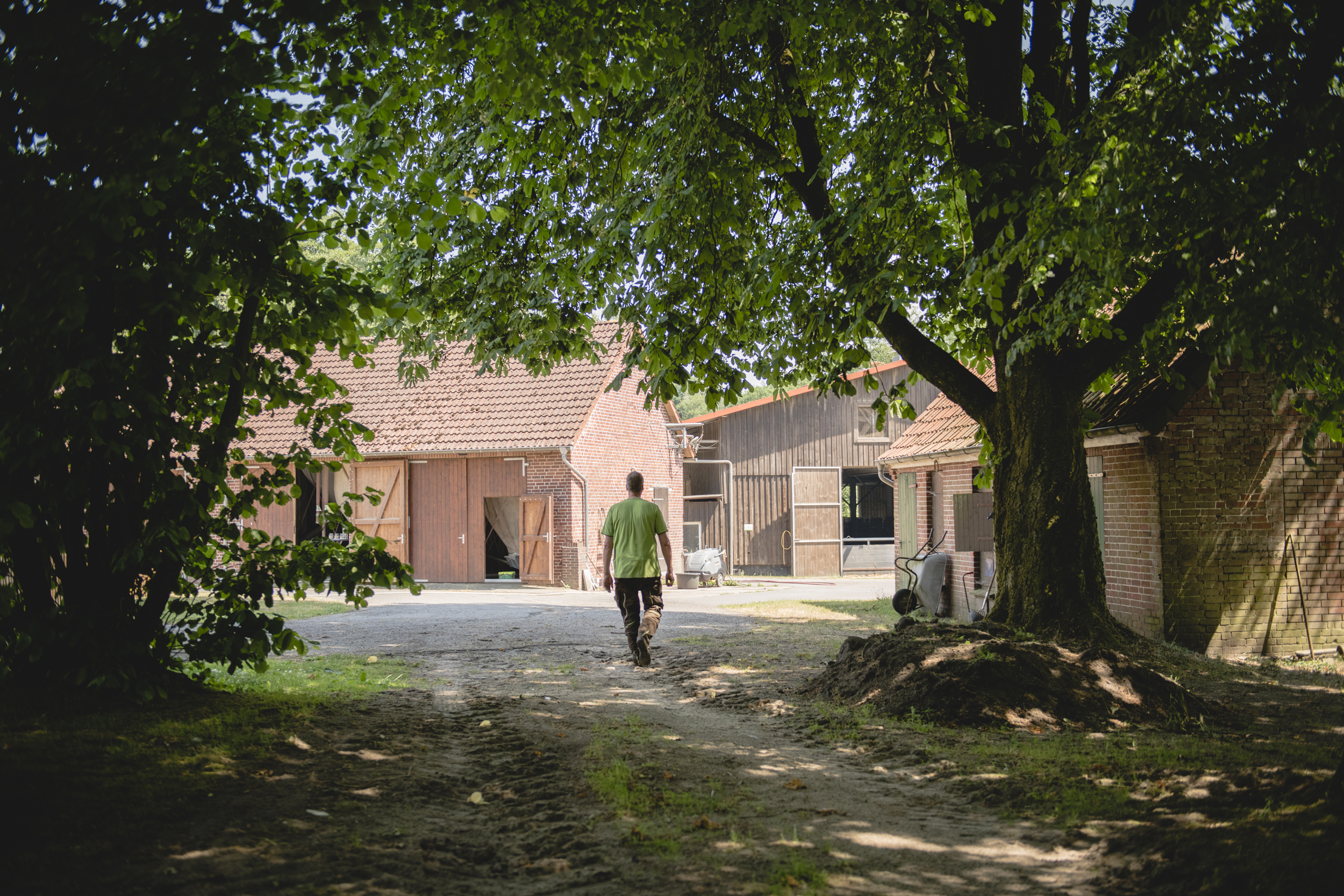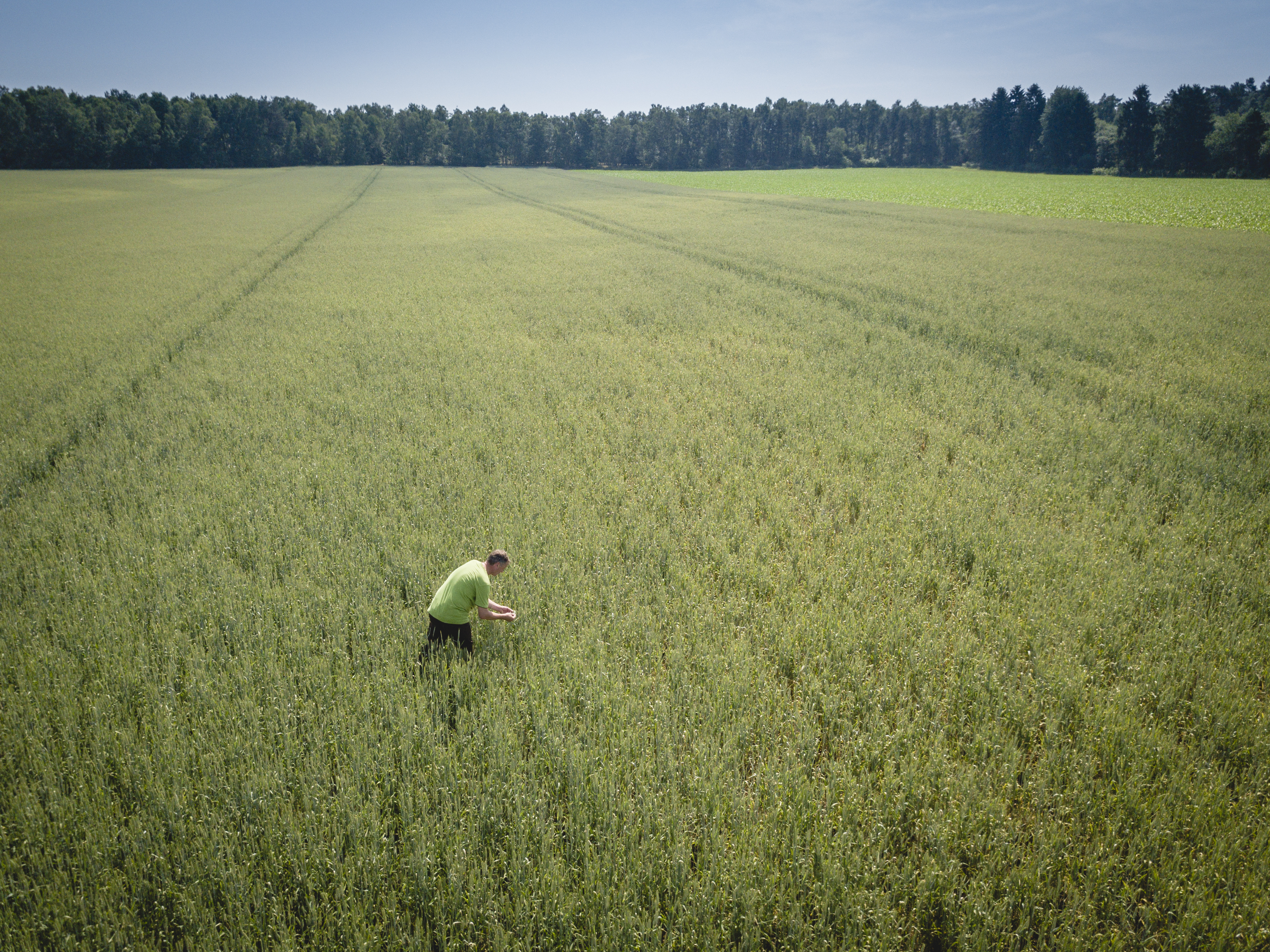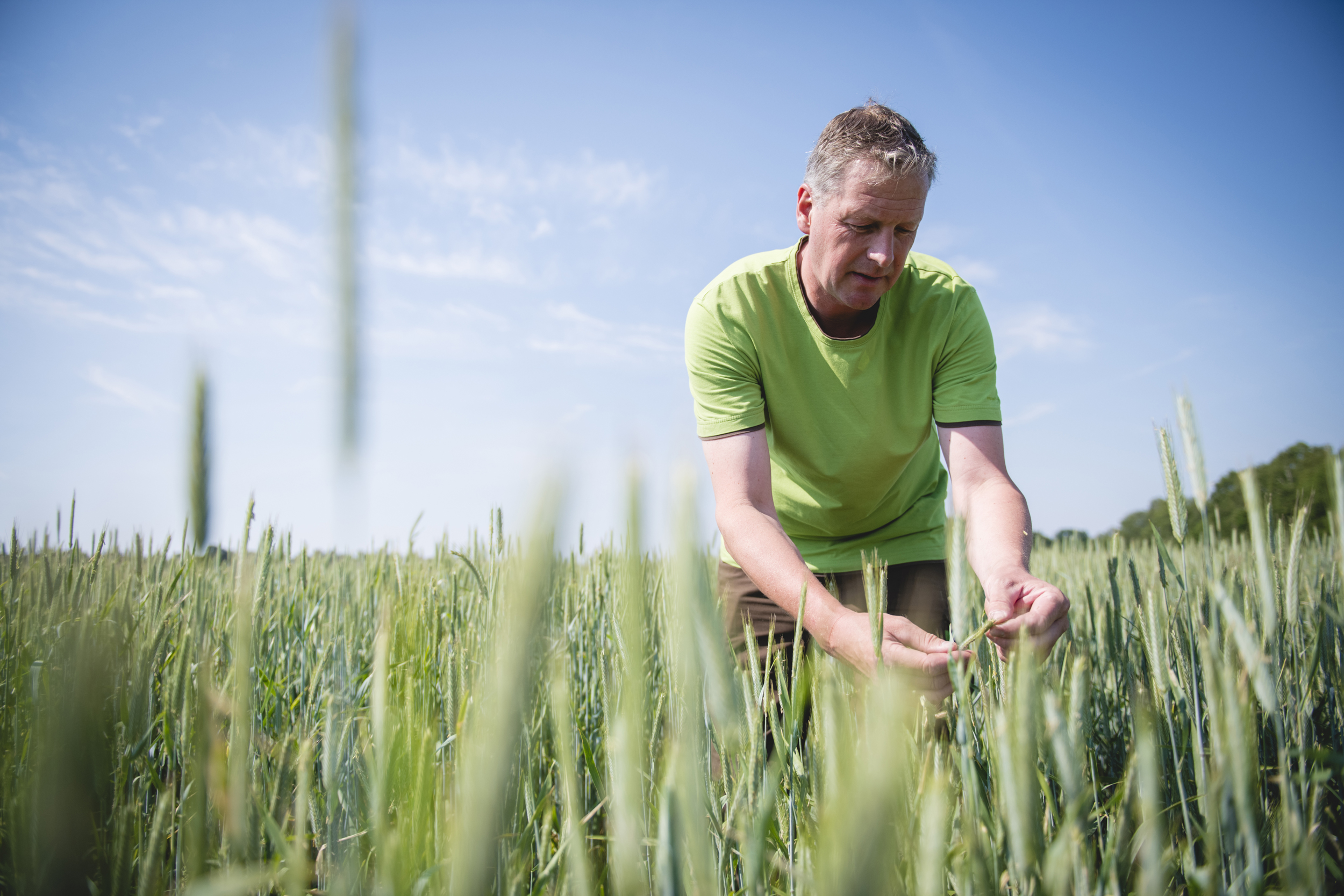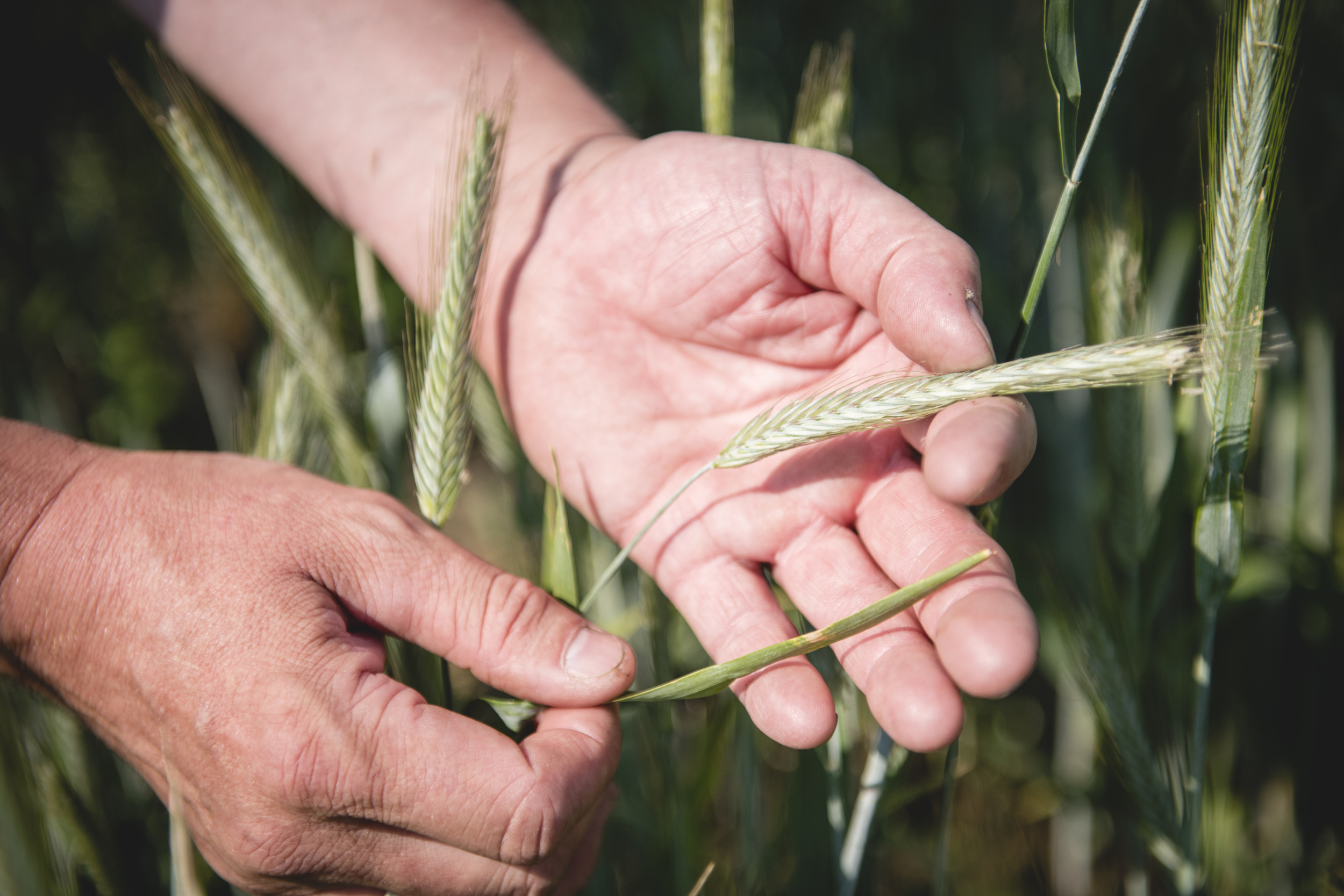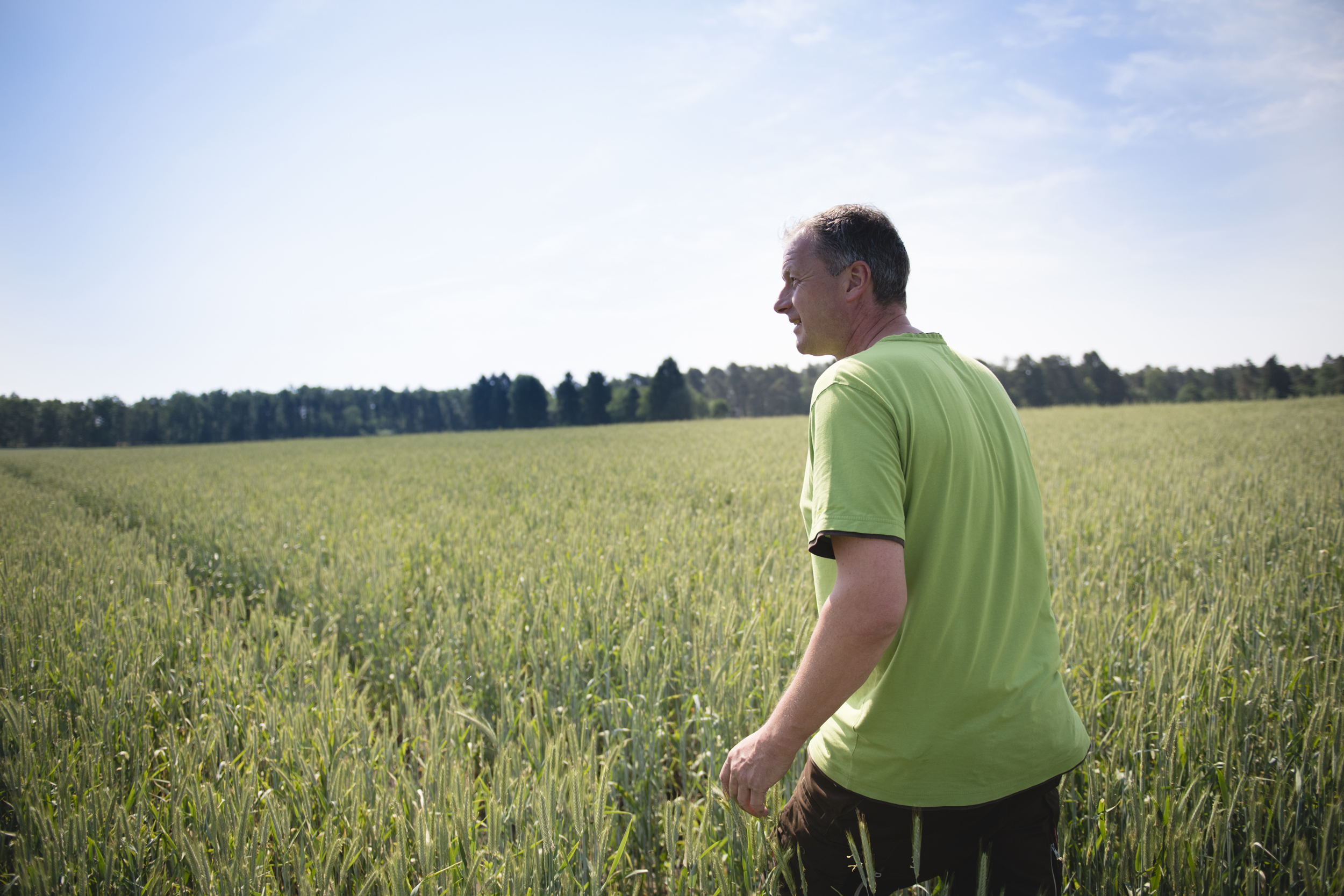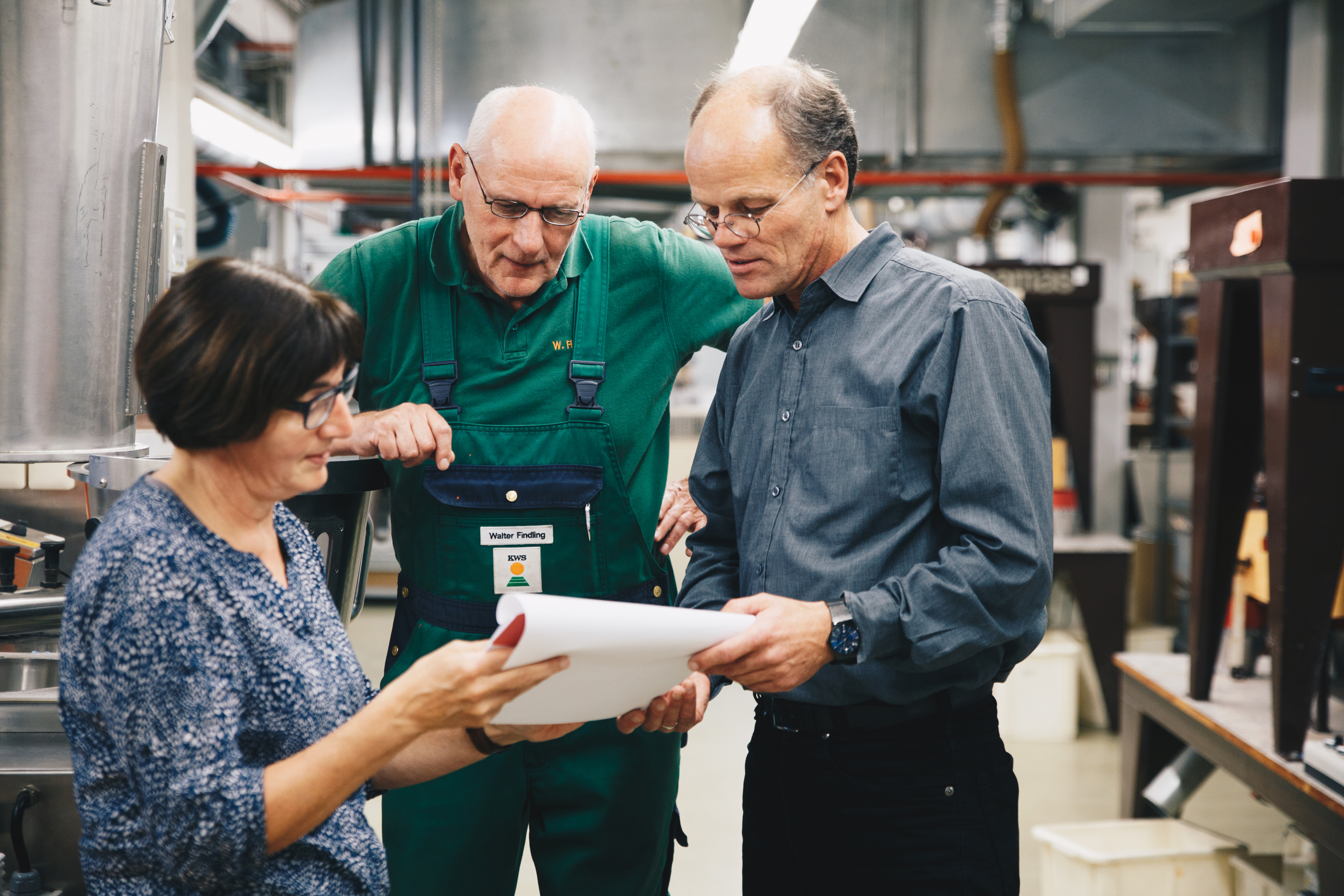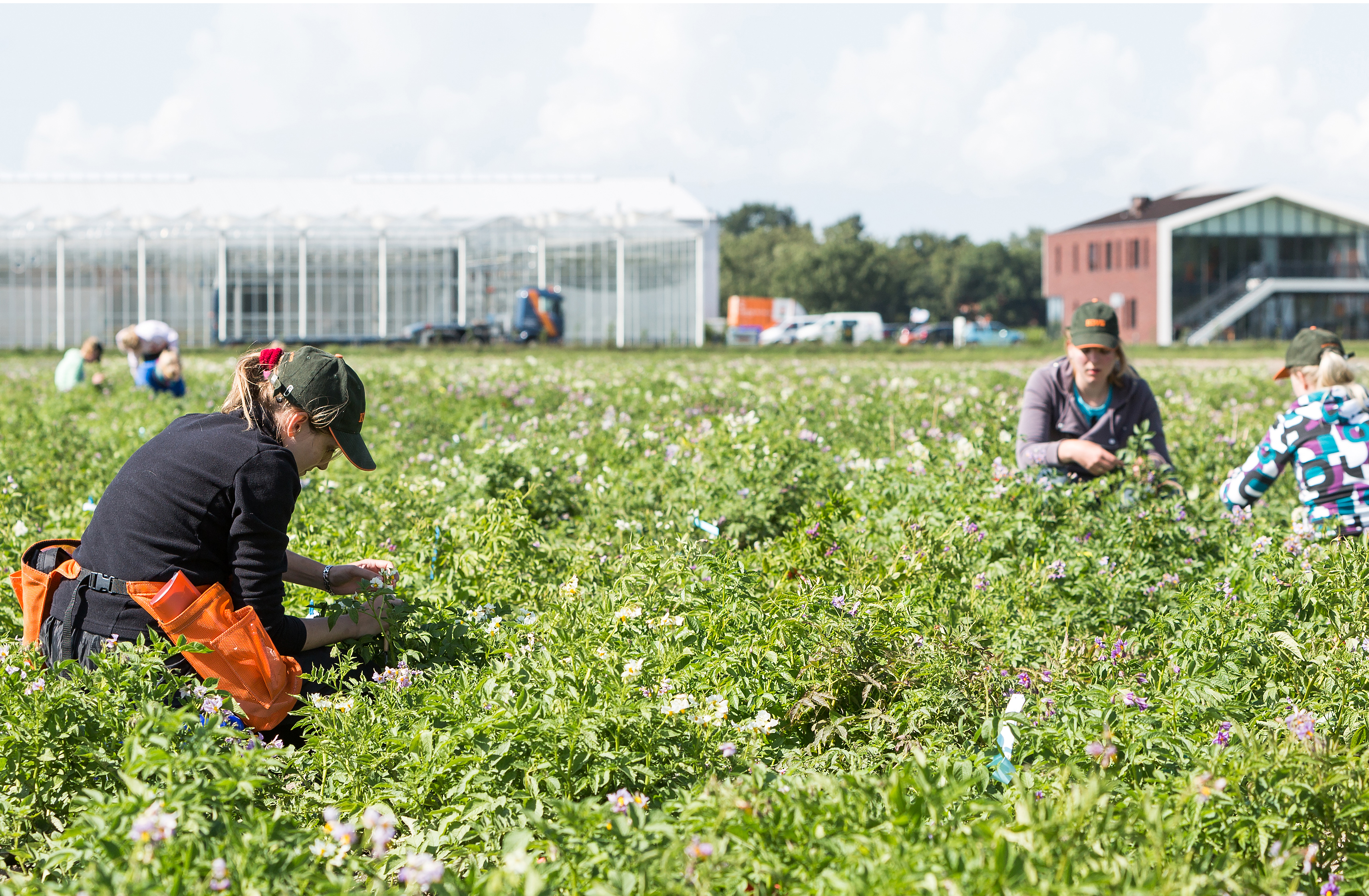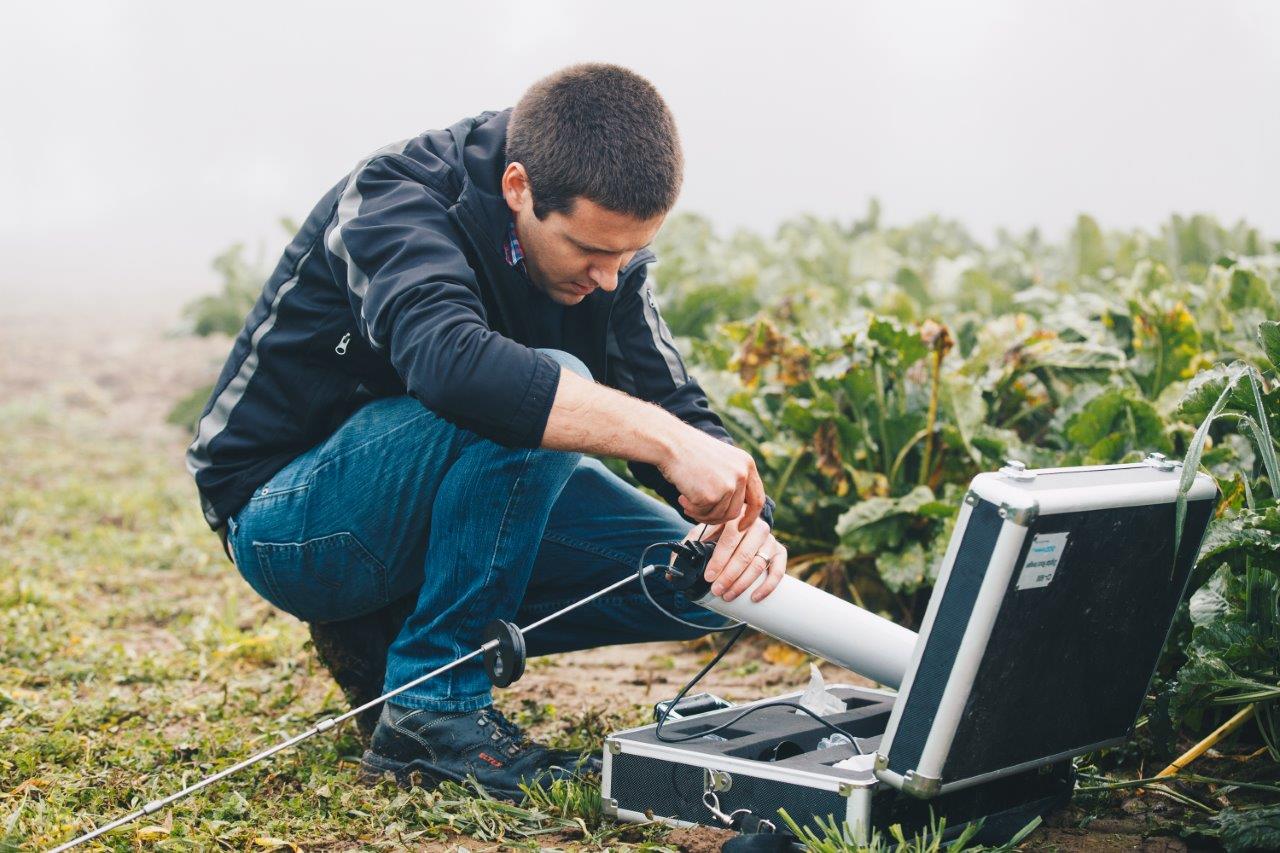Rye: resistant even in arid conditions
Strong plants swaying in the wind carry the secret to keeping pigs quiet and content during fattening. The extremely dry spring in 2018 apparently had only little effect on rye on the around 30 hectares of land not far from the farm. Andreas von Felde’s hybrid rye plants stand upright in the frugal, sandy heath that has additionally suffered from the lack of rain. “Resistance to drought is very advantageous for all of us here,” says von Felde. “In addition, the plants don’t snap in severe storms, and they deliver high yields on our difficult soils. And I hardly have any problem with diseases like rust or mildew.”
After all, modern breeding has virtually eliminated rye’s former weakness: susceptibility to ergot fungi. “I can largely prevent that by using the right variety and Pollen Plus technology. Many years of research by KWS have helped achieve advancements here. That process is just as complex as developing a new car.”
The long-established cereal is a key component of the philosophy for the von Felde family on its farm, namely a commitment to upholding tradition, but using state-of-the-art technology. The fact that von Felde himself works as a Product Manager at the seed producer gives added substance to his convictions.

